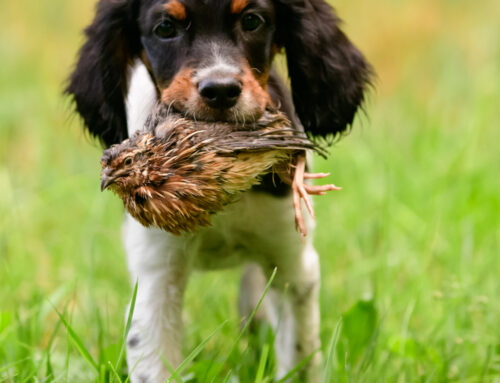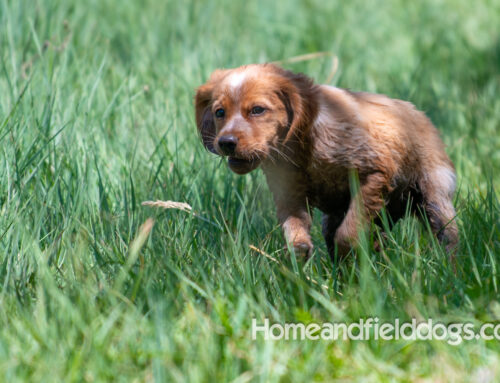Hello, passionate pet parents and future field champions! As we dive into the heart of your French Brittany’s development during weeks 16-20, remember: this isn’t just about training a hunting dog; it’s about nurturing a lifelong companion who’s as adept in the field as they are at warming your feet (and heart) by the fireside. Having raised a spirited French Brittany named Biscuit, who went from a bounding bundle of energy to a poised pointer, I’m here to share the roadmap that led us to success. So, buckle up for an adventure in puppy growth and learning!
Critical Components of Your Training Regimen
This stage is all about building on the basics while introducing more complex skills and behaviors. Let’s break it down:
-
Advanced Obedience: By now, your pup should have a good grasp of basic commands. It’s time to up the ante. Start working on longer stays, walking nicely on a leash even in distracting environments, and coming when called, regardless of temptations. Remember, patience and consistency are your best friends here.
-
Introduction to Fieldwork: If you’re training a hunting buddy, gently introduce the concept of fieldwork. Start with simple scent games, like hiding a treat or a favorite toy and encouraging your pup to find it. These games tap into their natural instincts and make learning a blast.
-
Continued Socialization: Socialization remains key. Expose your Brittany to different terrains, sounds of nature, and even mock hunting scenarios if possible. The goal? A well-rounded pup that’s as comfortable pheasant hunting as they are being petted at the local café.
-
Impulse Control: Hunting dogs need impeccable impulse control. Games like “leave it” or waiting for permission to eat can sharpen these skills. Biscuit learned to wait for my nod before diving into his dinner—a small but mighty victory in our training journey.
-
Water Acclimation: Many hunting dogs work with waterfowl, so early, positive exposure to water can set the stage for future success. Start with shallow, calm waters and always make it a positive experience. Biscuit’s first swim was more of a splash, but it was the start of his love affair with water.
Milestones and Hurdles
During weeks 16-20, you’ll likely see significant strides in physical coordination and mental acuity. Your pup’s ability to learn and execute more complex commands will grow, but so might their stubborn streak. Here’s where gentle firmness and a bucket-load of positive reinforcement come into play.
Applying Tactics at Home
- Practice in Short Bursts: Keep training sessions short and sweet. 10-15 minutes of focused training can be more effective than an hour-long session that leaves both of you frustrated.
- Use Daily Walks as Training Opportunities: Daily walks are prime real estate for training. Work on heel, stop, and recall commands. Every bush, squirrel, and passing dog is a chance to reinforce good behavior.
- Create a Sensory Garden: If space allows, create a mini sensory garden with different plants, surfaces, and hidden toy treasures. It’s a fun way to engage their senses and hone their tracking skills.
A Call to Adventure
Now, dear readers, armed with knowledge and insights, I invite you to embark on this training journey with enthusiasm and confidence. Remember, every champion was once a contender who refused to give up. Share your stories, challenges, and victories with us. Let’s create a community of support and celebration for our future field champions.
And to sweeten the deal, why not join our monthly “Puppy Progress Parade”? Share your pup’s achievements, however big or small, and let’s revel in the joy of raising these remarkable creatures together.
So, lace up those boots, grab those treats, and let’s turn these pivotal weeks into a foundation for a lifetime of companionship and success. Here’s to the journey ahead—may it be filled with joy, growth, and countless tail wags.






Leave A Comment